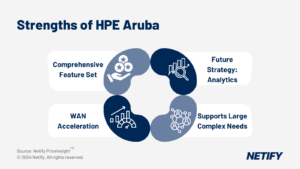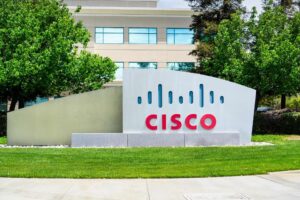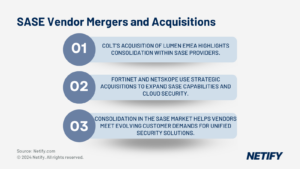| Meraki excels in simplicity and centralised management, while Extreme Networks focuses on AI/ML-driven scalability and tailored solutions in their SD-WAN solution. |
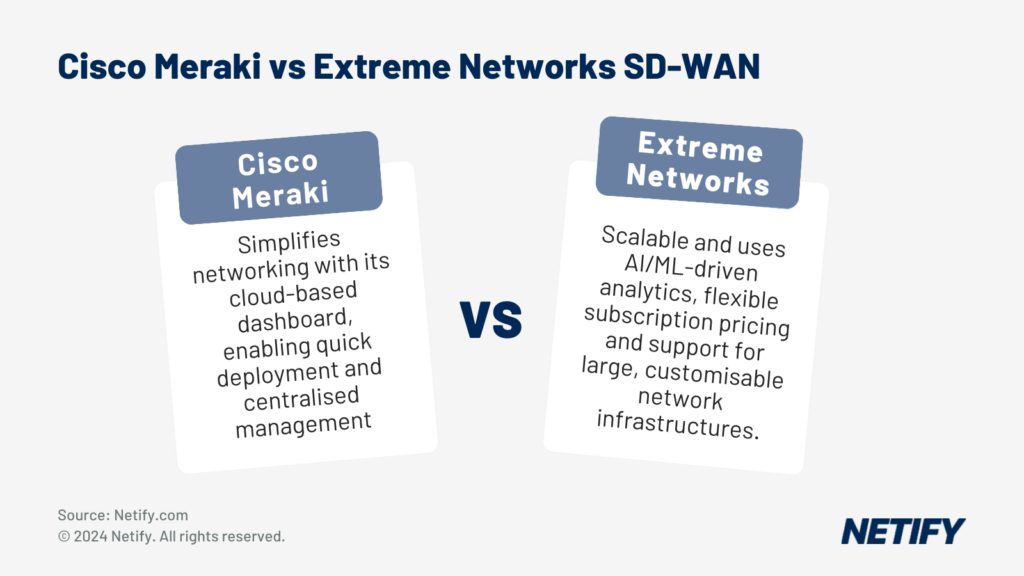
Meraki and Extreme Networks are both considerable choices when it comes to choosing a network solutions provider. Meraki is renowned for its ease of use, this is largely due to the lack of CLI and powerful dashboard. Extreme Networks are industry pioneers with advanced features driven by machine learning and artificial intelligence, yet presented in an understandable and transparent way.
Table of Contents
About Cisco Meraki
Acquired by Cisco Systems in December 2012, Meraki is the leading cloud-managed IT company with products including wireless solutions, network equipment and security offerings which can all be managed from their user-friendly web portal. Meraki is known for its simplicity and cost effectiveness.
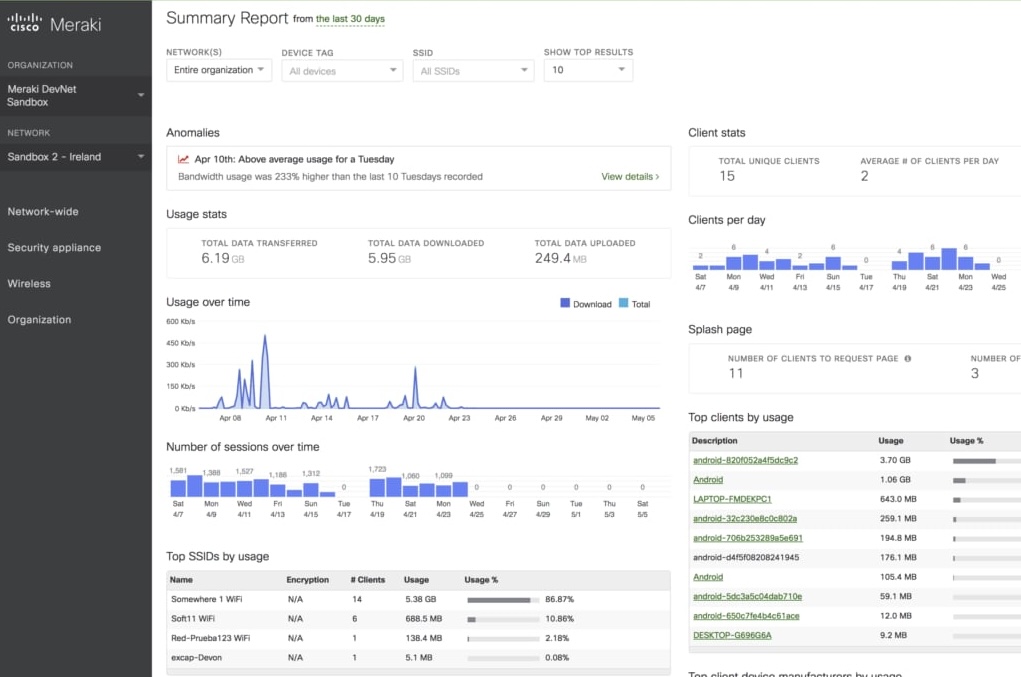
- Cisco Meraki SD-WAN Solution
- Cisco Meraki SD-WAN Solution
From Omida’s 2020 Cloud-Managed Networking Report, Cisco has a market share of 65% in revenue and 54% in device management. This is a market segment that Meraki invented and with the backing from Cisco has been immensely successful. In 2007 they were selected by San Francisco to power their “Free the Net” campaign which at its peak supplied 100,000 citizens with free internet connectivity.
Over 500,000 customers across the globe make use of Meraki products to make their network faster, smarter and easier. Meraki’s goal is to simplify networking, their products can be unpackaged and ready to go within minutes. Some networking knowledge is required though to configure features like spanning tree, VLANs and routing. This is all done through their management application which provides customers with a “single pane of glass” over their network infrastructure. The dashboard can be accessed from anywhere in the world and even has an app for iOS and Android. However, this does come with a cost, with each device requiring a subscription that can be purchased. As an example, a one-year wireless licence will cost around $150 and a three-year licence $300, as expected you’ll save by purchasing a longer lasting licence. It’s important to note that if your licence slips and you miss payments the device will stop passing traffic and your network will stop working.
About Extreme Networks
Extreme Networks was founded in 1996 with the target of developing the third generation of LAN switches that utilise the power of Gigabit Ethernet technology. In 2002, the same year that the IEEE published the standard for 10Gbit/s Ethernet over fibre for LAN (802.3ae), they released both the first Gig-E and 10Gig-E switch. Since then their products have kept evolving and they now offer a large assortment including wired and wireless network equipment, security and software for managing, analytics and user policies.
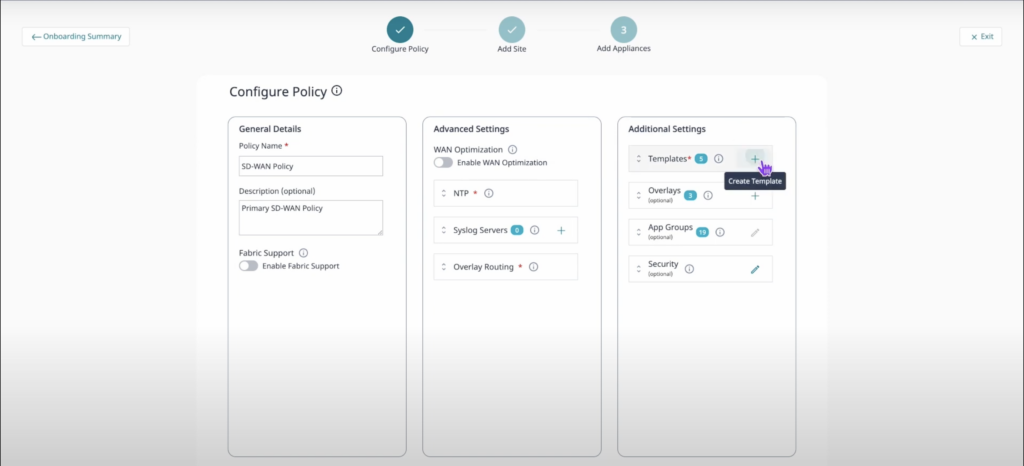
Extreme Networks SD-WAN Setup - Extreme Networks SD-WAN Setup
Extreme Networks have a strong focus on machine learning and artificial intelligence, and their products reflect this. They believe in making ML/AI understandable, yet still offering all the capabilities to allow faster, smarter and more efficient harnessing of data. This is done in a transparent way allowing the customer to see, verify and trust the machine’s recommendations. In 2019 they acquired Aerohive Networks, who were an emerging cloud-managed networking company.
Extreme has grown to be the biggest competitor to Cisco’s Meraki and currently hold a 10% market share in both revenue and devices managed in the cloud-managed space.
From global enterprises to small town high schools, Extreme caters to all sizes of networks allowing customers to better understand their users and develop their organisation. With over 50,000 customers all possessing the same goal of customer-driven networking. Since 2014 they have been the official sponsor of the NFL. ExtremeCloudIQ is their powerful SaaS cloud-based management platform which allows users to analyse and maintain their network. Customers have a choice of four plans, each more advanced and feature heavy than the last.
LAN/WAN Comparison: Cisco Meraki vs Extreme Networks
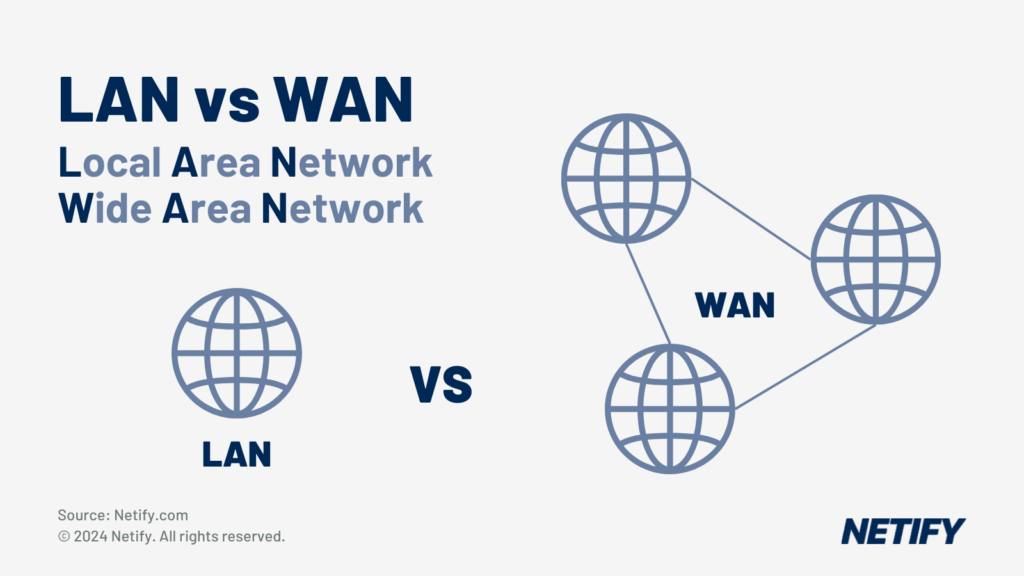
LAN vs WAN - LAN vs WAN
Meraki LAN/WAN
- Meraki has a wide range of LAN and WAN products, including wireless LAN/WAN, SD WAN, switching and security.
- All follow their objective of making networking simpler.
- A customer is able to unbox a device, e.g. WAP, cloud-managed switch, smart camera etc. connect it to the network and instantly start configuring and managing via the web panel from anywhere in the world. This reduces the need for an engineer to go to every site and configure.
- Meraki switches combine the simplicity of cloud-managed capabilities with the strength of enterprise-grade hardware, catering to the demand for next generation networks.
Extreme Networks LAN/WAN
- With simplified yet high scalability in mind, Extreme’s LAN/WAN products are all cloud-managed through their ExtremeCloud IQ platform.
- Products include but aren’t limited to routers, switches and wireless access points.
- The management dashboard is powered by artificial intelligence and machine learning to provide greater network visibility, and can be accessed on any device, from any location.
- ExtremeSwitching key capabilities include; fabric-enabled, dynamic role–based policies, application hosting and AI/ML driven analytics.
Wireless Comparison: Cisco Meraki vs Extreme Networks
Cisco Meraki LAN/WAN
- With WiFi 6 allowing for increased bandwidth, lower latency and higher capacity, it’s no doubt enterprises are looking to implement.
- Meraki has an assortment of wireless APs for whatever scenario you could imagine.
- For high density coverage, the MR56 offers WiFi 6 with speeds of up to 5.9Gbit/sec, ideal for campuses and high traffic offices.
- Again, all maintained and monitored through the Meraki dashboard, customers have access to rich analytics, allowing them to better understand their users.
- Administrators can clearly identify bottlenecks and weak spots, allowing for resolution with ease.
Extreme Networks: WiFi
- ExtremeWireless provides customers with WiFi 6 and increased performance and security.
- Latest technologies including OFDMA which allows for APs to serve multiple clients simultaneously and software-defined dual 5GHz radios for areas with high density.
- Again, these are all managed through ExtremeCloud IQ, powered by machine learning to make your WiFi work for you.
- The C35 is their award-winning wireless controller for advanced functionality allowing customers to define how wireless voice/video/data traffic is processed.
SD WAN and SASE security comparison: Cisco Meraki vs Extreme Networks
Cisco Meraki SD WAN and SASE
- The MX appliance creates the framework for Cisco powered SD-WAN by securely auto-provisioning IPsec VPN tunnels between sites.
- Using the dashboard, customers can create these VPN tunnels in minutes, with end-to-end network visibility through advanced analytics with machine learning and smart path selection for the ultimate user experience.
- Cisco’s Talos team is made up of the world’s most sought-after security researchers who are devoted to providing superior protection to their customers.
- With SD-WAN security concerns do arise but Meraki’s SASE solutions are tailored to your needs so you can rest assured knowing your infrastructure is protected.
Extreme Networks SD WAN and SASE
- Earlier in the year, Extreme announced the acquisition of Infovista’s Ipanema SD-WAN service.
- Allowing for increased flexibility, capability, and security when connecting locations.
- Extreme CEO Ed Meyercord said “Ipanema’s cloud-managed solution automatically and dynamically adjusts application traffic flows based on real-time network conditions, which increases performance and improves quality of experience for end-users and delivers savings for the business”.
- The deal was expected to be completed in October, however there is still no mention of SD-WAN or SASE on their website.
SD WAN and SASE support comparison: Cisco Meraki vs Extreme Networks
Cisco Meraki Support
- Following their trend for simplicity, Meraki’s all-inclusive support comes with no hidden costs.
- They have 24/7 telephone support centres in San Francisco, London, Sydney, Chicago, Shanghai and Tokyo.
- But they hope you’ll never need to call, their self-provisioning hardware, automatic firmware updates, automatic network optimisation and intuitive user interface significantly reduce the need for additional support.
- Meraki support engineers are able to troubleshoot many issues remotely via web-based tools.
Extreme Networks Support
- Extreme has the industry’s only 100% in-sourced support team, dedicated to solving any issue that might arise.
- Global Technical Assistance Centre (GTAC) is worldwide, with support lines in the vast majority of countries.
- Customers report above and beyond support, one stating that they wrote a new firmware patch in response to their reporting of an issue.
- They have a substantial knowledge portal full of support guides, product help sheets and FAQs.
SD WAN and SASE managed services comparison: Cisco Meraki vs Extreme Networks
Cisco Meraki managed services
- Meraki themselves don’t offer any managed service.
- But there are many third-party providers that do. With services including; 24x7x365 monitoring & automation, network design and firmware management.
Extreme Networks managed services
- Extreme Networks provide you with a trusted partner for managed services to keep your network secure and efficient.
- Benefits include; expert knowledge, support when you need it and relieving your IT team of mundane tasks.
SD WAN and SASE deployment comparison: Cisco Meraki vs Extreme Networks
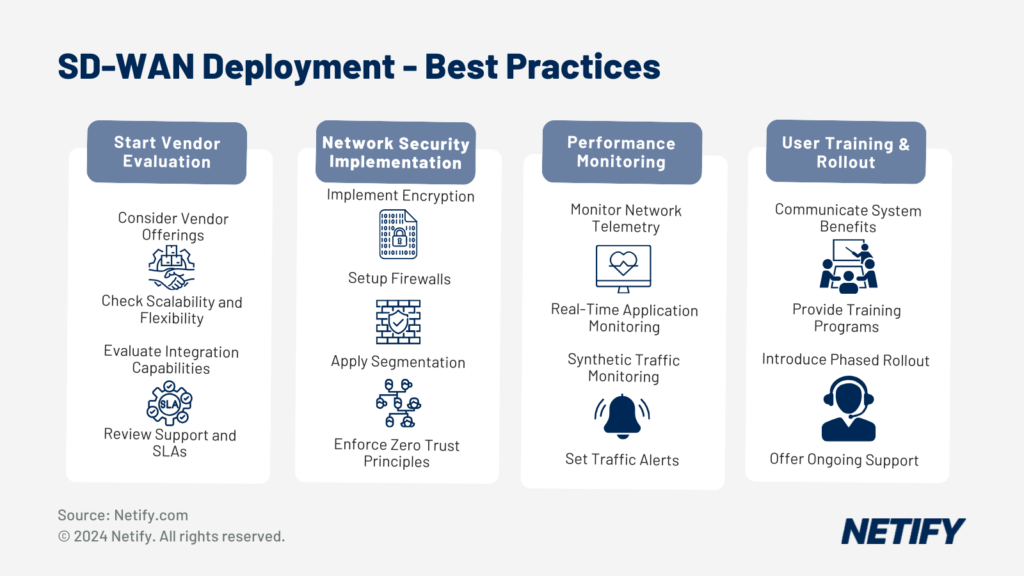
Best Practices for Successful SD-WAN Deployment - Best Practices for Successful SD-WAN Deployment
Cisco Meraki deployment
- Deployment of Meraki devices is one of the easiest in the network industry.
- This is something that they strive for. Out of the box, added to the network and configured in minutes.
- As long as your device is licensed the process is simple.
- It is important to remember that Meraki devices all need a licence to work.
- There is a deployment guide for every product and popular scenarios such as configuring high availability, these are available in many different languages.
Extreme Networks deployment
- The ExtremeControl deployment guide supplies customers with extensive step-by-step instructions on how to deploy.
- Including phased rollout strategies, network considerations and common troubleshooting. Ensuring you have a smooth deployment.
SD WAN and SASE reporting & management: Cisco Meraki vs Extreme Networks
Cisco Meraki reporting and management
- The Meraki dashboard is undoubtedly one of the best on the market right now, accessible by any web browser and dedicated app on both iOS and Android.
- Its simple GUI interface along with powerful insights and analytics ensure this.
- Providing centralised visibility & control over your Meraki suite without the cost, complexity and need of wireless controllers or additional management systems.
- The lack of CLI is often mocked by Cisco veterans, but the whole point of Meraki is to make networking easier.
Extreme Networks reporting and management
- ExtremeCloud IQ has been developed with human usage in mind, taking away required time to complete menial and time-consuming operational tasks.
- Customers can choose from four plans; Connect (free), Navigator ($95), Pilot ($125) and CoPilot (each more advanced than the prior).
- Connect provides free device management.
- Navigator has the same plus management functions for third-party and non-native cloud devices.
- Pilot provides advanced infrastructure management, reporting and remediation tools.
- CoPilot is the most feature rich, incorporating machine learning derived insights and intelligence.
SD WAN and SASE cost: Cisco Meraki vs Extreme Networks
Cisco Meraki costs
- Unlike other hardware providers, Meraki shows prices of the equipment directly on their website.
- MR86 is their top of the range outdoor WiFi 6 capable AP, costing $2,257. Customers can then choose from two licences, enterprise and advanced.
- Enterprise licence allows for cloud-based management and 24/7 support, prices start at $150 for one year, $300 for 3 years and $450 for 5 years.
- Advanced licence gives users the features of enterprise as well as integrated Umbrella DNS and adaptive policy automated segmentation. 1 year costs $300, 3 years for $600 and 5 years for $900.
- Customers are able to transfer licences when upgrading to a similar device. Access points range from $300 to $2257.
- Switches from $784 for an MS120-8 (8 port GigE) to $22,077 for MS425-32 (32 port 10G SFP+). They also supply IoT devices, in particular smart cameras which start at $699.
Extreme Networks costs
- Compared to the usual outright purchasing or leasing of equipment, Extreme offers a monthly subscription service. This allows for customers to use OpEx (operating expenses) dollars instead of CapEx (capital expenditures).
- Having everything tied into one payment, including support and licensing is favourable for many.
- This also allows for easier hardware refreshes as you don’t have to time it to a purchase cycle/lease term.
- Unlike Meraki, they aren’t open with their prices and you need to contact their sales team for a quote.
- Looking at third-party suppliers, APs range from £150 to £2000 and switches from around £400 (12 port GigE) to £20,000 (latest 48 port 10GigE).
- It is important to note that every device doesn’t require a licence. Wireless APs for example can all be added onto a licensed wireless controller, which can then be added to the management software. Scalable up to 2,000 APs per controller.
